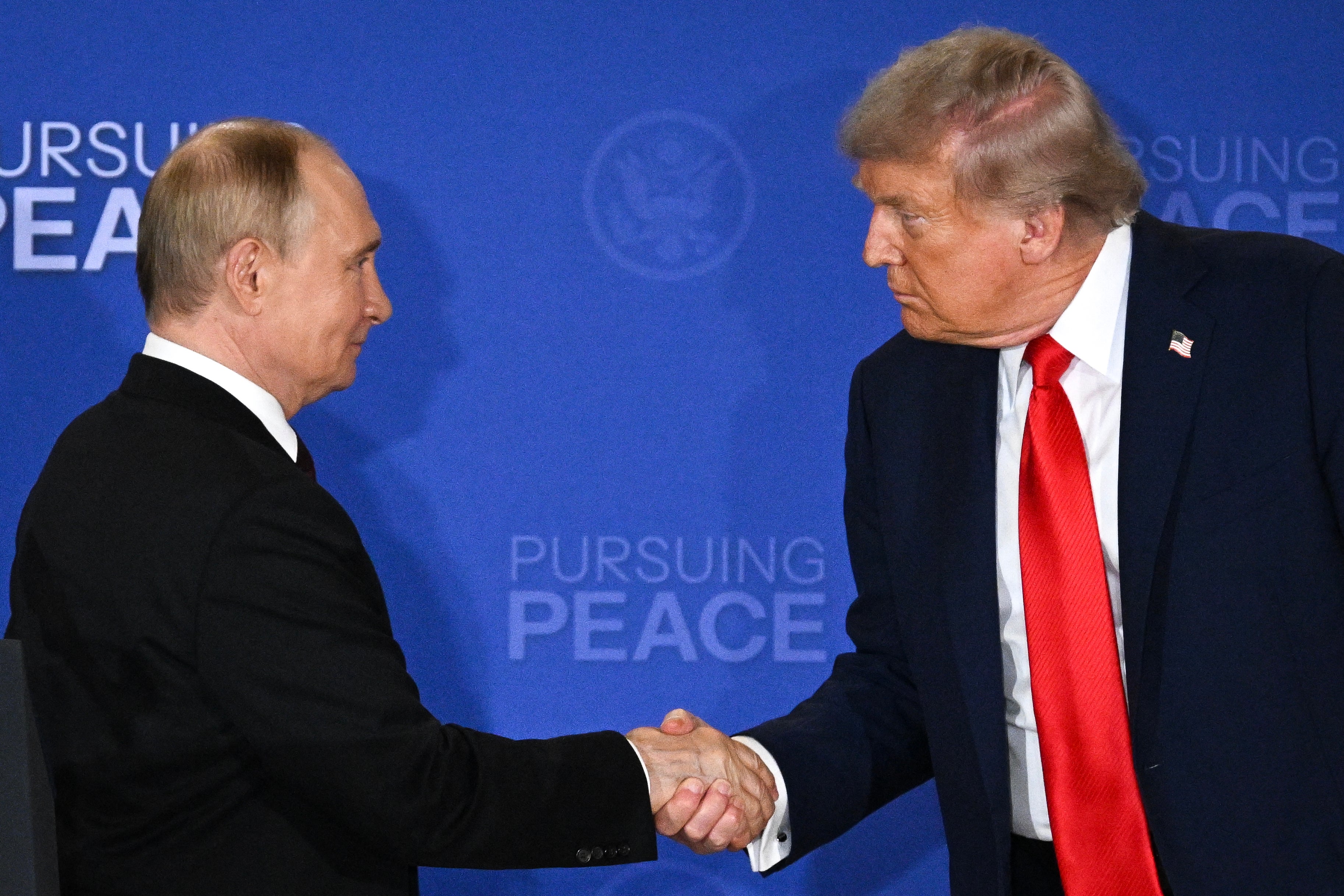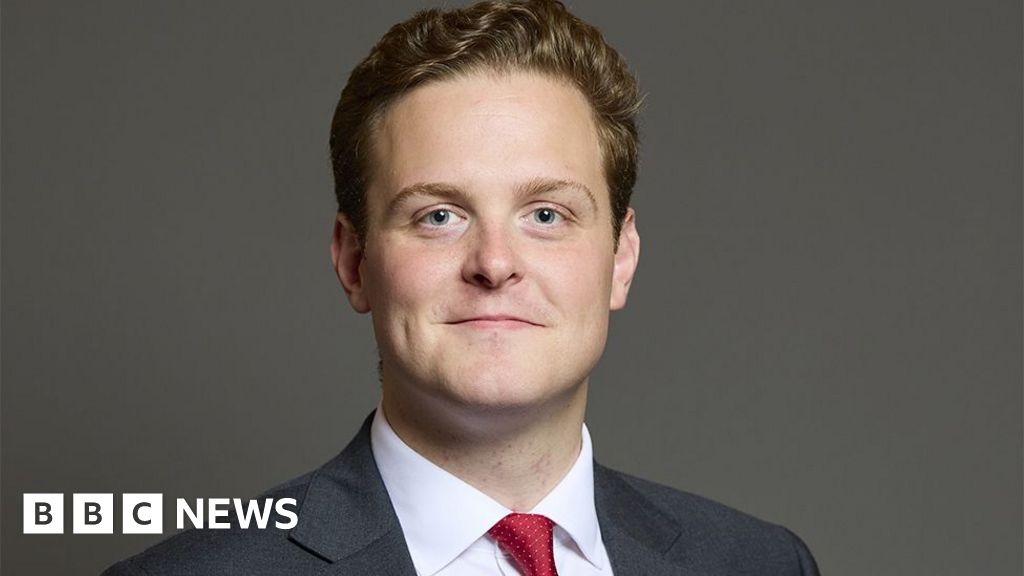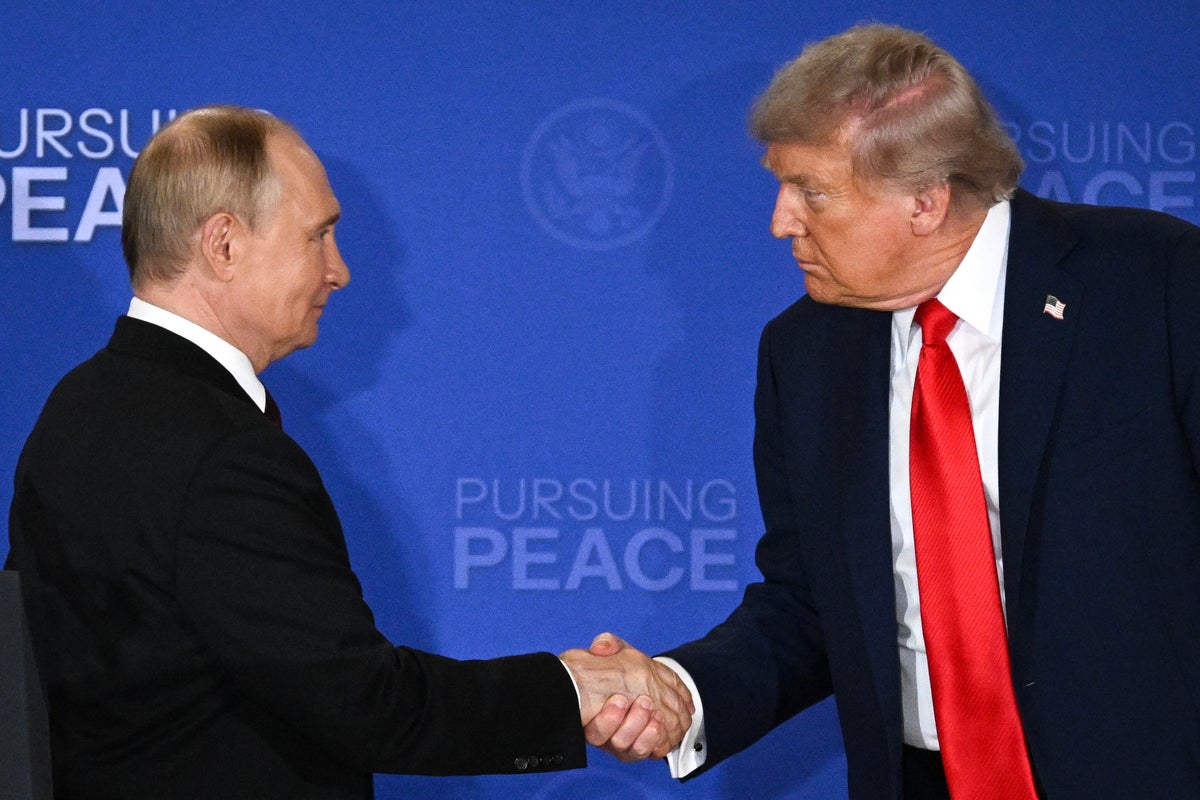Nearly eight years after Donald Trump turned in such an embarrassing performance at his first summit with Vladimir Putin that members of his own party were left struggling to defend him, critics feared he was set for a repeat performance in Alaska Friday.
Putin traveled from Moscow to Joint Base Elmendorf-Richardson in Alaska — on what was once sovereign Russian land — after three years of isolation brought on by his unprovoked invasion of Ukraine, hoping he could charm, cajole and flatter Trump into taking his side over that of Volodymyr Zelensky.
Trump arrived first, and the two leaders met on a red-carpeted tarmac for a handshake. It was there that Putin got his first surprise.
As the leaders walked towards waiting reporters and photographers, a noise above drew the Russian leader’s attention. He looked up to see something that on any other day, in any other place, would have meant very bad things for him: The belly of an American B-2 bomber, a machine built to kill him by dropping nuclear weapons on Moscow without detection by Soviet (later Russian) air defense systems.
Trump then pulled Putin into his waiting limousine for a shared ride to their talks, bypassing the armored car that had been brought from Moscow for the Russian president’s use.

Next, the one-on-one meeting Putin had expected became a three-on-three session with him and two of his aides across from Trump, his special envoy Steve Witkoff, and Secretary of State Marco Rubio.
Only after that could Putin expect to have Trump sit down with a group of Russian business leaders who he’d brought with him, expecting the American leader to be swayed with the promise of investment and business opportunities in the same way other foreign leaders have curried favor with Trump.
It never happened.
After nearly three hours of talks, Trump and Putin walked out to face hundreds of reporters who’d gathered in expectation of a joint press conference.
Speaking first, Putin appeared optimistic about the talks as he said he and Trump had come to ‘agreements’ and described Ukraine — the sovereign nation he invaded and has been pillaging since March 2022 — as Russia’s “brotherly nation” and claimed Russia wants to end the conflict.
Through a translator, the Russian strongman repeated oft-used lines about addressing what he calls the “primary roots, the primary causes of that conflict” — meaning his desire for Ukraine to end any ambitions to integrate with the West by joining the European Union or NATO — and said any settlement in the conflict must “consider all legitimate concerns of Russia and to reinstate a just balance of security in Europe and in world on the whole.”
But moments later, Trump torpedoed Putin’s claim to have reached an agreement, telling reporters instead that there were “many points that we agreed on” during the talks but there were still “a couple of big ones that we haven’t quite gotten there.”
“So there’s no deal until there’s a deal,” Trump summed it up.
The president stressed that any future deal would have to receive assent from the Ukrainian government as well as America’s NATO allies, and said he’d be “calling up … the various people that I think are appropriate,” as well as Ukrainian president Volodymyr Zelensky to read them in on what transpired behind closed doors today.
Trump added that the meeting, in his estimation, had been “very productive” and included “many points” that had been agreed to, and said there was a “good chance” of reaching some sort of accord going forward.
A second meeting has been floated in recent days by Trump but has not been confirmed.
Putin suggested to Trump in English: “Next time in Moscow,” which the president said he could “get a little heat” for but added he could see it “possibly happening.”
Trump thanked the reporters for attending and he and Putin quickly left the stage.
Within the hour, both leaders’ aircraft were wheels up and bound for home.
There were no fireworks, there was no grand bargain rolled out, and it wasn’t clear what — if anything — the two leaders had actually agreed on at all.
And while some commentators were casting the lackluster result as a win for Putin because Trump hadn’t rolled out the sanctions he has spent weeks threatening, the Russian leader most likely wasn’t smiling as his plane climbed away from Alaska.
That’s because he failed to do what he’d done in Helsinki, where he’d charmed and flattered Trump into taking his side over America’s own intelligence services.
He’d even failed to bring Trump back to his previous anti-Ukraine worldview, that which was on display in February when he and Vice President JD Vance got into an Oval Office shouting match with Zelensky before throwing him out of the White House.
Instead, he had to watch as Trump reaffirmed that the final settlement in the war he’d started would have to pass muster with Zelensky, the man who he’d hoped to kill in the opening days of the war.
The years between Helsinki and Anchorage — and the months between February and now — have seen Trump go through trials (literally) and tests.
For better or worse, he’s no longer the neophyte, easily flattered naif who Putin made a fool of in Finland all those years ago. And though he’s long had an uneasy relationship with both Zelensky and NATO, the months since that disastrous bilateral meeting have seen him grow more and more frustrated with Putin and better understand the European desire to avoid rewarding attempts at military conquest on their soil.
It wasn’t a perfect result, but Trump is learning. And now, Putin knows that.





